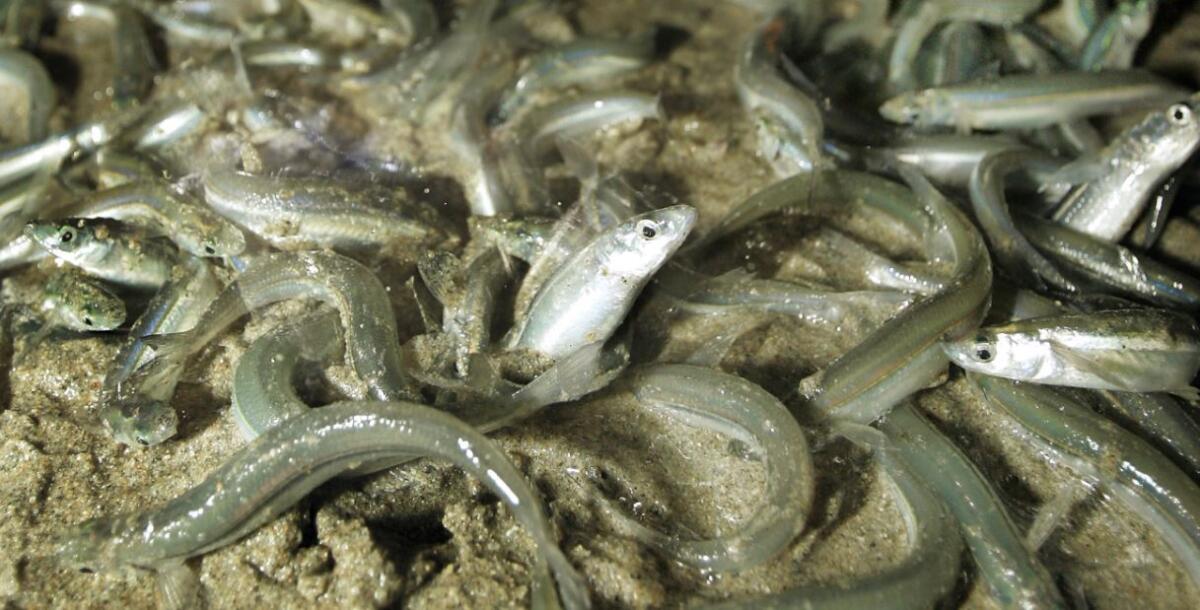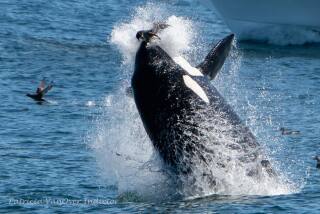Grunion runs are here: See fish leap from ocean, mate on beach

A file photo shows grunion spawning in Long Beach during a run.
- Share via
Love is in the air. At least if you’re a grunion.
It’s that time of year when the silver sardine-size fish begin wriggling up en masse on some Southern California beaches in a nighttime ritual that is all about mating.
It’s a startling sight: fish leaping out of the ocean with the high tide to fertilize eggs on the beach. Females get into a vertical position, head up and tail down, allowing them to deposit eggs in a deep sandy nest. Males then wrap their bodies around the female and release a sperm-containing fluid, which flows down the female’s body until it meets the eggs below, according to the California Department of Fish and Wildlife.
Peak mating season is from late March to early June, but the season can last through August, and occasionally into September, according to the department. The agency has posted on its website projected dates of grunion runs. Officials advise the public to call state and county beach lifeguards, who can often tell if spawning has taken place.
Chris Pierce, a marine safety lieutenant for the Seal Beach Lifeguard Department, offered some advice on grunion-run viewing: After checking the forecast for grunion runs, avoid well-lit parts of the beach with a lot of people. “If you go to the outlying parts of the beach, there’s a lot more fish out there, away from the people.”
Also, avoid using your flashlight; the lights scare the fish away.
“Let your eyes acclimate to the darker environment, and pretty soon, you’ll see them, no problem … It’s pretty cool.”
The Department of Fish and Wildlife forecasts the next grunion run will start late Sunday night in Los Angeles County, running between 11:40 p.m. Sunday and 1:40 a.m. Monday at Cabrillo Beach near the Los Angeles Harbor entrance. There’s another run that begins the next night. The times are five minutes earlier on the San Diego coast and 25 minutes later along the Santa Barbara coast. The state has more information here.
According to the department, the usual range of the grunion extends from Point Conception in Santa Barbara County to Point Abreojos in Baja California. They are found occasionally as far north as Monterey Bay and south to San Juanico Bay in Baja California.
Follow me on Twitter for more California news: @ronlin
More to Read
Sign up for Essential California
The most important California stories and recommendations in your inbox every morning.
You may occasionally receive promotional content from the Los Angeles Times.














